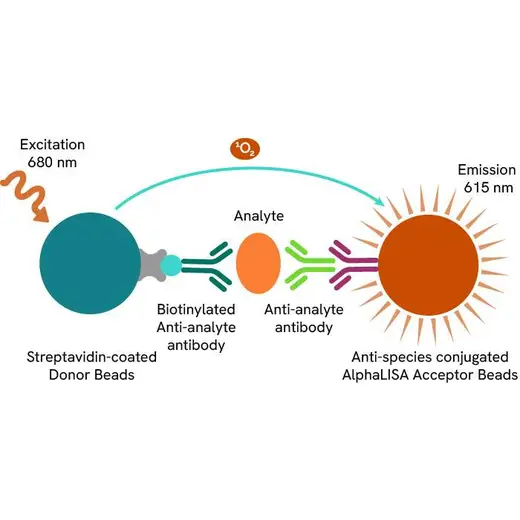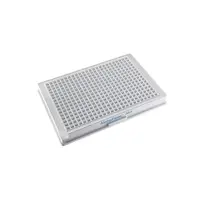
AlphaLISA Bovine IgG1 Detection Kit, 500 Assay Points










The AlphaLISA® Bovine IgG1 Detection Kit is designed for detection, quantitation, and isotyping of bovine IgG1 in serum, buffered solution or cell culture medium in a homogeneous (no-wash steps, no separation steps) assay.
For research use only. Not for use in diagnostic procedures. All products to be used in accordance with applicable laws and regulations including without limitation, consumption & disposal requirements under European REACH regulations (EC 1907/2006).
Product information
Overview
Formats:
- Our HV (100 assay point) kits allow you to run 100 wells in 96-well format, using a 100 µL reaction volume (10 µL of sample).
- Our 500 assay point kit allows you to run 500 wells in 96-well or 384-well format, using a 50 µL reaction volume (5 µL of sample).
- Our 5,000 assay point kit allows you to run 5,000 wells in 96-well or 384-well format, using a 50 µL reaction volume (5 µL of sample).
Features:
- No-wash steps, no separation steps
- ELISA alternative technology
- Sensitive detection
- Broad sample compatibility
- Small sample volume
- Results in less than 3 hours
- Half the time of an ELISA assay
There are five classes of mammalian immunoglobulins: IgA, IgD, IgE, IgM, and IgG. IgG is the most abundant immunoglobulin and is equally distributed in blood and tissue. In bovine, the IgG1 class is further divided into two subclasses: IgG1 and IgG2. The general immunoglobulin structure is composed of four polypeptide chains, two heavy and two light chains linked together and to each other by disulfide bonds, creating a tetrameric quaternary structure. IgG1 is involved in response to a foreign antigen. The presence of IgG1 usually signifies a mature antibody response. IgG1 has a molecular weight of about 150 kDa, it can bind to many pathogens and also plays an important role in antibody-dependent cell-mediated cytotoxicity. Typically, bovine serum and plasma samples contain about 5.0 to 15.1 mg/ml of IgG1. The present kit permits detection of bovine IgG1 (i.e. analyte) in bovine serum and plasma.
AlphaLISA technology allows the detection of molecules of interest in a no-wash, highly sensitive, quantitative assay. In an AlphaLISA assay, a biotinylated anti-analyte antibody binds to the Streptavidin-coated Donor beads while another anti-analyte antibody is conjugated to AlphaLISA Acceptor beads. In the presence of the analyte, the beads come into close proximity. The excitation of the Donor beads causes the release of singlet oxygen molecules that triggers a cascade of energy transfer in the Acceptor beads, resulting in a sharp peak of light emission at 615 nm.
Specifications
| Application |
Biologics/Bioprocess
Protein Analysis & Detection
|
|---|---|
| Assay Points |
500
|
| Assay Target Class |
Antibody
|
| Automation Compatible |
Yes
|
| Brand |
AlphaLISA
|
| Detection Method |
Alpha
|
| Experimental Type |
In vitro
|
| Format |
Microplates
|
| One Unit Contains |
1.0 each
|
| Shipping Conditions |
Shipped in Blue Ice
|
| Unit Size |
500 assay points
|
Video gallery


Resources
With over 200 different types of cancer, management relies on a variety of techniques such as chemotherapy, radiotherapy, and...
Antigen-stimulated cellular cytokine release measured by AlphaLISA bovine cytokine kits.

SDS, COAs, Manuals and more
Are you looking for technical documents for this product. We have housed them in a dedicated section., click on the links below to explore.


How can we help you?
We are here to answer your questions.


































